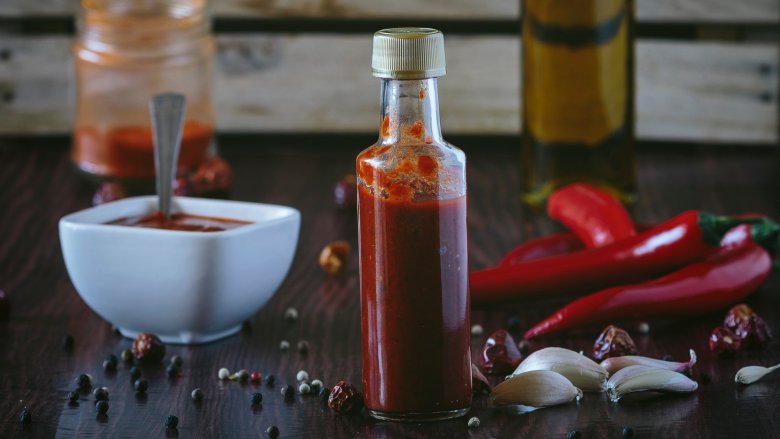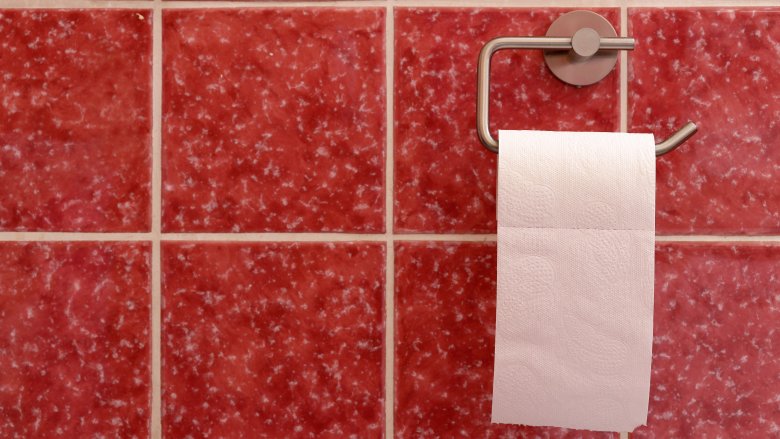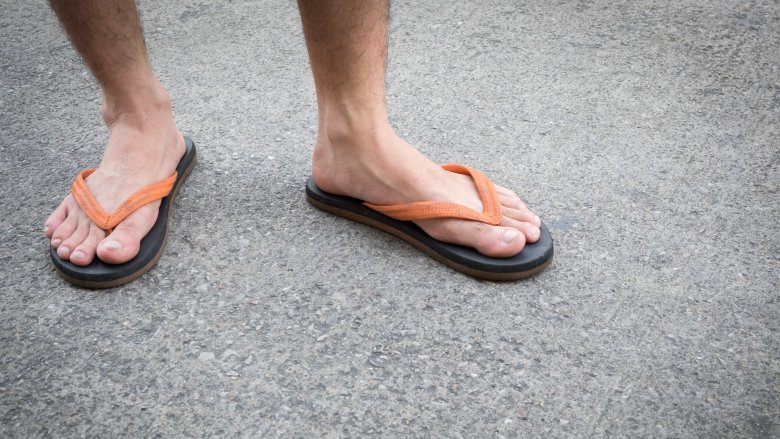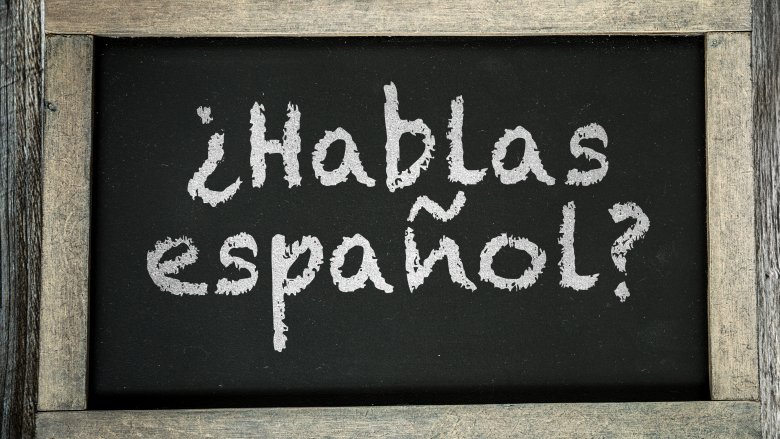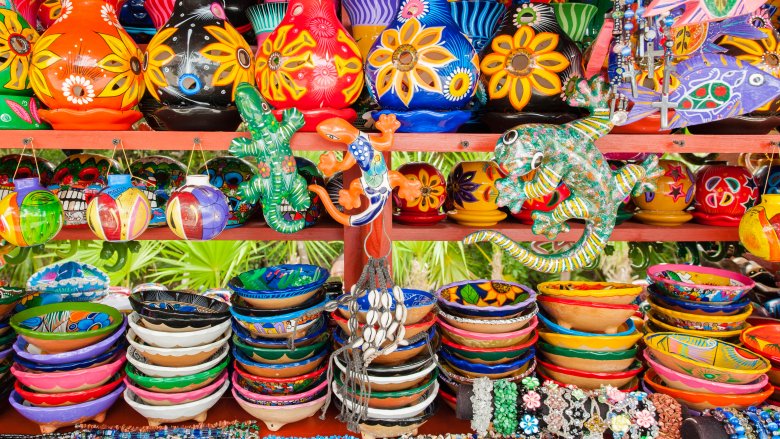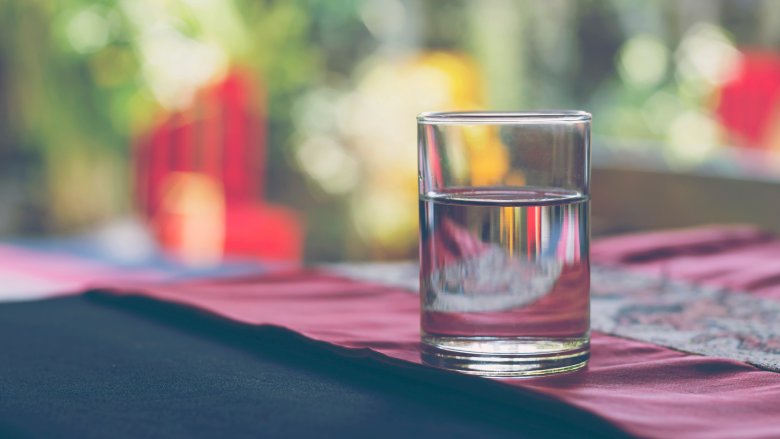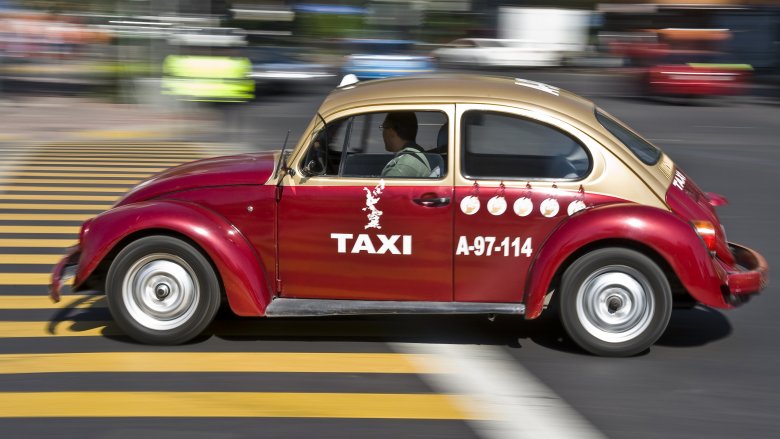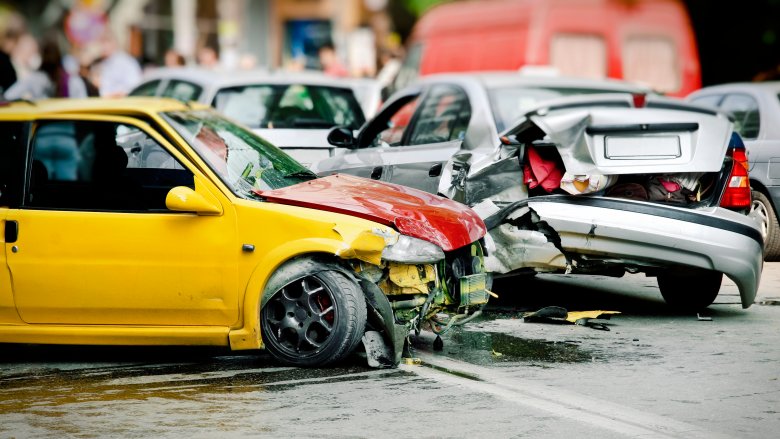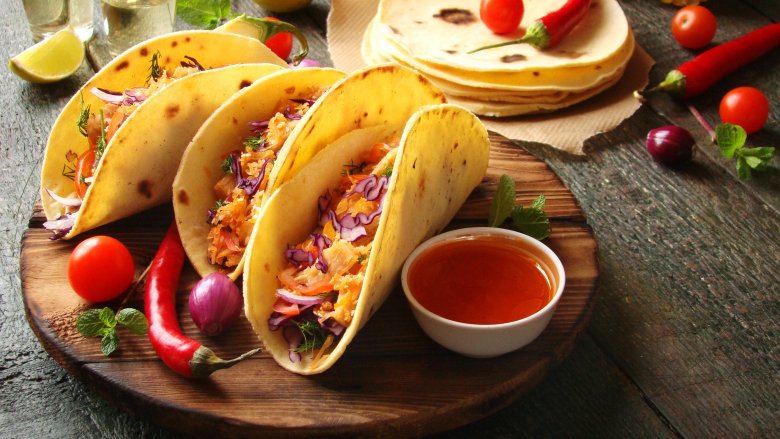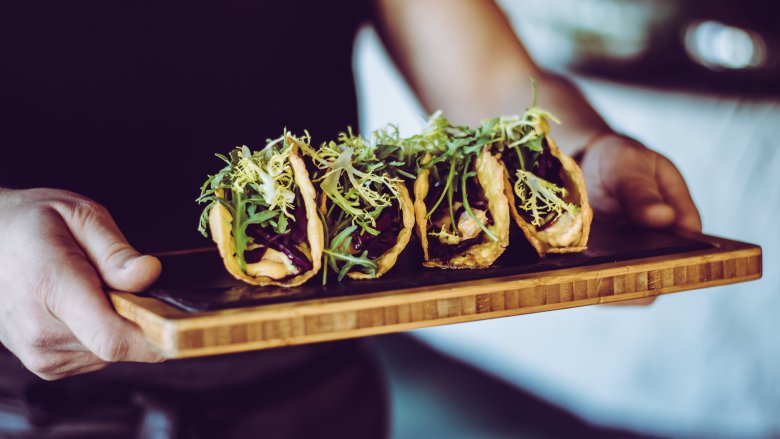13 Things You Should Never Do In Mexico
The golden rule of tourism is this: Don't be obnoxious. Sometimes, travelers seem to forget that they're not visiting a remote part of the United States, they're entering a completely different nation with a completely different culture, which means they really should try to learn something about the people who live there or risk being labeled "obnoxious tourist."
Some people don't really care, unfortunately, but you should. You'll have more fun, you'll be treated with respect, and you'll just have a more pleasant experience overall if you're gracious, amicable, and you know the do's and don'ts of the place you're visiting.
This is just as true in Mexico as it is in Ukraine, Japan, or Iceland. Even though Mexico is just on the other side of the border, it has a unique culture, a set of unwritten rules of behavior, and a few random quirks that might catch you off guard if you're not well informed about the ins and outs of traveling in Mexico. And guess what, you're in luck, because to get you started here are a few things you should never do while you're in Mexico.
Don't underestimate the hot sauce
We Americans love to say we're into spicy food. We slather our burritos with extra-hot salsa and we grow jalapeno peppers in our gardens and we brag to our friends about how much heat we can take. But let's face it, fellow Americans, our extra-hot hot sauce is like ketchup compared to the stuff you can get in Mexico. And jalapenos are for wimps.
Some Americans get caught totally off-guard by actual, authentic Mexican hot sauce. According to Mexpro, hot chili peppers thrive in the Mexican climate, so they've always been an important part of Mexican cuisine. Also, the locals believe that eating spicy chili peppers can actually help you manage the hot climate — spicy food makes you sweat, and sweat helps you cool down as it evaporates. That is, if you can take it.
The bottom line is, Mexican chefs aren't going to tame down their food for you, so whatever dish gets set down in front of you — even one that's typically mild in a Tex-Mex restaurant — might already be as much as you can handle. So taste first, then make sure you can manage the hot sauce before you start slathering more on.
Don't flush this stuff that literally everyone flushes
All sewage systems are not created equal. And other sewage systems are extra-not created equal.
Now, most of us know there are certain things that we just should not flush. You know, like plastic wrappers, diapers, and that really annoying noisemaking toy that your mother-in-law bought for your toddler, much though you probably like to fantasize about sending it down the ole porcelain portal. But in Mexico, there's one thing we all take for granted as being totally flushable that's not actually flushable at all, and that's toilet paper. Yes, when you visit the public restrooms in Mexico, you can flush number one and you can flush number two, but you cannot flush the stuff you used to clean up number one and number two. According to Mexico Live it Love it, the sewage systems in most Mexican cities can't handle the toilet paper.
Instead, you have to put your horrible, stained, used toilet paper in the trash can right on top of the rest of the horrible, stained, used toilet paper that everyone else put in the trash can. And then you have to hope and pray that the sink works and that the proprietors have refilled the soap dispenser in the last six months or so.
On the flipside, you probably thought there wasn't anything that could make you miss the pit toilets at your favorite campsite, so, hooray.
Those flip-flops make you look like a tourist
Summertime, yay! So many of us greet the warmer weather by kicking off our boots and swapping them for sandals and flip-flops, which become the go-to footwear for wherever we go during the season. But if your travels happen to take you to a big city in Mexico, you should seriously rethink your shoes.
According to Factory Two Four, in Mexico no one wears flip-flops in the city. Beaches, check. But flip-flops in the city are problematic for a couple reasons. First, flip-flops scream "tourist," and the locals will automatically have just a little bit less respect for you if you're traipsing about in beach footwear. Shorts are okay in hot weather, but decent footwear will give you an air of "I'm not just another blundering tourist." Also, eww. Cities are dirty places, and your feet are not going to be pretty when you get back to your hotel for the evening.
Don't assume that everyone in the world speaks English
There's a reason people in so many countries think American tourists are obnoxious. In the United States, you might be able to get away with telling people to speak English (even though it isn't the official language), but you can't do that in other countries. And some American tourists in Mexico seem to have forgotten that they're actually no longer in the United States.
If you typically travel in European countries, you may find that a lot of people — especially those in the service industry — do speak "the language of commerce" simply because it's good business to know English when you own a business that caters to American tourists. Mexico doesn't have quite the same standards. According to My Latin Life, Mexico ranks 43rd in English language proficiency among the world's non-English speaking nations. That means a greater percentage of people in Vietnam and Indonesia can speak English than can speak English in Mexico. So if you plan to stick to the stereotypical activities, you can probably get by without knowing any Spanish. If you're going to venture out of the usual tourist traps, it's a good idea to take a crash course in the local language.
Don't pay full price
If you try haggling over the price of a box of Milk Duds at the Chevron, people are going to look at you funny. Nobody haggles in America, at least not outside of a car lot or Craigslist. In Mexico, you can plan on haggling for just about everything, with the exception of items sold in big chain stores.
According to Make Change, street vendors will typically ask about twice what their products are worth because there's already an established expectation that there will be some haggling. In other words, if you just accept the sticker price at face value, you're not only a clueless tourist and a sucker, you are also depriving the vendor of the chance to help you feel good about yourself and your bargaining skills.
There are polite limits, though. Remember that market sellers are often supporting families in a difficult economy, so your sweet score means less income for them, and less food for their kids. Haggle, yes, but don't haggle a lot. That stuff is already pretty cheap and if you're on vacation you probably don't need the extra pesos as much as they do.
Don't skip the sunscreen
You know better than to go out in the sun without sunscreen. Right? It's not like we're still living in the '80s, when sunbathing was totally a thing and people were still using the anti-sunscreen, you know, that oily stuff that basically sucked UV rays into your skin and trapped them there right next to your smoking, precancerous skin cells. Wait, sunbathing is still a thing? Who knew.
Anyway, if you're going to be spending hours in the sun, people, wear sunscreen. This is true wherever you are, but one mistake tourists sometimes make is believing that sun exposure is the same no matter where you go. That's why British people always look like tomatoes when they go to Florida. (There's no sun in England, so they think they don't burn.)
Similarly, Americans and Canadians and people from other northerly nations may not be prepared for the intensity of the sun in Mexico. Even if you think you don't burn, well, in Mexico you probably will because Mexico is closer to the equator, which means the Sun is closer to you. And according to Cabo San Lucas Tours, you should also be choosing a biodegradable sunscreen, especially if you plan to swim in the ocean. Sunscreens that are not biodegradable can harm the coral reefs and marine life in Mexican waters.
Don't make fun of the Virgin of Guadalupe
Even the most clueless tourist knows you should respect the religious beliefs and practices of the locals. But for some reason, that respect doesn't always seem to extend to the Virgin of Guadalupe, who is a big, big deal in Mexico and not just because one portrait of her is 65 feet tall.
The Virgin of Guadalupe is the patron saint of Mexico and a symbol of Mexican identity. According to legend, she appeared in 1591 to an indigenous man named Juan Diego on Tepeyac Hill, which today is a suburb of Mexico City. The Huffington Post says her image has been used all over Mexico throughout Mexican history, and she's not just a religious symbol but also a patriotic one.
Now, one wonders why a tourist might be compelled to make fun of such an obviously venerated symbol, but tourists are notoriously clueless, callous, and arrogant, so it's not totally shocking that the occasional tourist finds something funny about the Virgin. If you do, too, just try and hold your tongue. Making fun of the Virgin of Guadalupe is a double insult — you're not only dissing the faith of the vast majority of Mexicans, but also their national identity. It's as bad as insulting a Mexican's mother, which by the way you also shouldn't do.
Don't be stupid with your money
It doesn't really matter where you go, it's generally always a good idea not to wear flashy jewelry or carry large bills around with you, unless you're in one of those exclusive resorts that prides itself on keeping out everyone who isn't a millionaire. But it's especially true in some parts of Mexico, especially in places where there's a lot of poverty.
It's wise to always be wary of pickpockets, who tend to haunt crowded places like public transport stations, shopping centers, concerts, and the like. And Mexperience says you should leave your fat wad and extra credit cards at the hotel — if you find you don't have enough cash to buy something you encounter on your travels, you can always put down a deposit and come back for it later.
Use credit and debit cards carefully, too. Don't ever give your card to your server at a restaurant; instead, pay at their card terminal. And avoid using debit cards at the gas station because card skimming is pretty popular in some places.
You already know this one: Don't drink the water
This advice is repeated so often that it's almost become an urban legend, which means some people wonder if it might really be true. But we're here to tell you, it's still very much a bad idea to drink tap water in Mexico. In fact in some parts of Mexico the locals don't even drink the tap water.
According to Cancun South, the water table in the Yucatan is high, so it's easily contaminated by trash and runoff, which means it's full of bacteria and god knows what else. But it goes way, way beyond just not drinking the water. You should also not use it to brush your teeth, and you should be wary of fresh fruits and vegetables, which are grown in local farms and are often fertilized with pig and (wait for it) human dung. Also the produce isn't washed very well, and if it is, it's washed in tap water so...
Some restaurants purify their vegetables, which makes them safe to eat, and if so that will be printed right on the menu. If that message isn't on the menu, skip the raw fruits and vegetables. And don't forget that salsa qualifies as raw "fruits and vegetables" — and to make matters worse, the salsa served at Mexican restaurants usually sits out all day and isn't changed between patrons. So if all that other stuff didn't gross you out, well, there's a little bonus for you.
Don't hail a cab
Taking a cab is something a lot of Americans do. In fact we'll quite happily get in someone's private vehicle, too, which would have been really weird a decade ago and now feels totally normal and not at all dangerous.
In Mexico City in particular, though, you can't just flag down a cab wherever you happen to be. Well, you can, but not every cab is licensed and the ones that are unlicensed aren't just operating illegally, they might actually be engaged in nefarious stuff like kidnapping and extortion of their customers. According to Mexperience, taxi-related crime doesn't happen as often as it did 10 or 15 years ago, but when it does it usually goes down like this: The taxi picks you up, but instead of taking you to your destination, it takes you to an ATM. Then you're told to withdraw cash, hand over all your belongings, and to make matters worse, it still won't take you to your destination. Instead, the driver drops you off in some remote and terrifying neighborhood in the far reaches of the city.
So how can you avoid being the victim of taxi crime? Only ride in cabs that have a distinctive white license plate that has a leading capital letter and five numbers. Unlicensed cabs won't have these kinds of plates. Other than that, you can use a "Taxi Rank" cab, which is basically a cab service you call for rather than hailing on the street.
Don't bring your own car
Well, you can bring your own car, but it's risky and you need to make sure you really know what you're doing. First of all, you need to have insurance, and not Geico or AAA. You need to carry Mexican insurance. According to Mexpro, the policy you hold while you're in Mexico needs to be purchased from a company that is registered with the Mexican Department of Insurance, and that includes the following U.S. insurers: None of them.
If you do drive your own car in Mexico and you don't buy Mexican insurance, you'll be okay as long as you're not involved in an accident. If you are involved in an accident, though, and Mexican officials decide the accident is your fault, you will be taken into custody until you can prove your ability to pay for the damage. Yes, in Mexico you will go to jail for being uninsured, and kept there until you pay.
So really, if you're too cheap to buy an insurance policy during your visit, you should just leave your car at home. Sure, you probably won't get into an accident. But if you do, it's going to ruin your vacation. And probably your return home, too.
Don't compare Mexican food to "Mexican food"
You might think you love Mexican food, but if you've only ever been to taquerias in America, you've never really had Mexican food. According to the Daily Meal, many of the staples of Mexican cuisine in America don't show up in authentic Mexican cuisine — so beef burritos, beef burritos with cheddar cheese, beef burritos with cheddar cheese and black beans, and beef burritos with cheddar cheese, black beans, and flour tortillas are all totally off the menu.
What we eat in America is not Mexican, it's Tex-Mex, which has its roots in Mexican cuisine but has evolved over the last century and a half or so to incorporate wheat flour and beef and other ingredients common in Texas but hardly ever eaten in Mexico. In fact the combination plate (an entree with rice and beans on the side) was the invention of a Tex-Mex restaurateur in the early 1900s, and nachos have only been around since the 1950s.
So the bottom line is, don't expect Tex-Mex when you go out to eat in Mexico, and don't say things like "this isn't anything like the Mexican food I get in Boise" because that's just rude.
Don't expect prompt service
We Americans like to be waited on. Don't deny it — if it weren't true we wouldn't waste so many characters praising/vilifying the service every time we feel moved to post a review on Yelp. We like polite service, we like attentive service, and most of all, we like prompt service. So change your expectations before you go to Mexico because "prompt service" is not usually in your waiter's job description. Or in anyone else's job description.
According to Mexperience, things are just a lot more laid back in Mexico. Really, that makes it the perfect place for a relaxing vacation, but sometimes American tourists have a hard time understanding that they really don't need super-prompt service while they're trying to relax. Being perpetually late and slow is kind of just a part of the Mexican culture — even people living in Mexico have come to expect that the guy they hired to fix the roof might not actually show up until two or three hours after he said he would. (Wait, contractors do that in America, too, so that's maybe not the best example.) Anyway, the same is true for waiters and other service professionals, so if you're going to go out for dinner, don't expect it to be grab and go. Plan to budget most of your evening, and just relax and enjoy.

